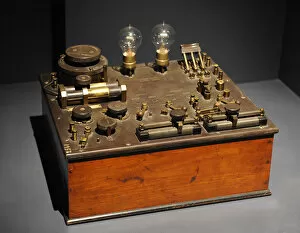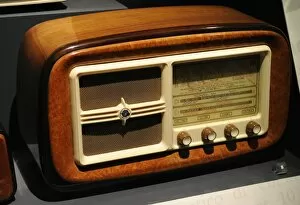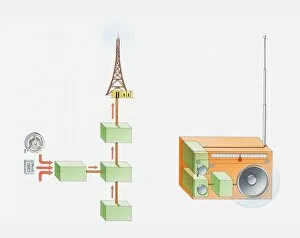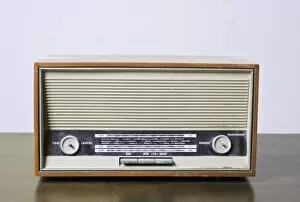Radio Receiver Collection
"Exploring the Evolution of Radio Receivers: From Two-Valve to Superheterodyne Circuits" Step back in time to 1917, when the two-valve radio-receiver made its debut
All Professionally Made to Order for Quick Shipping
"Exploring the Evolution of Radio Receivers: From Two-Valve to Superheterodyne Circuits" Step back in time to 1917, when the two-valve radio-receiver made its debut, revolutionizing communication as we know it. Fast forward to 1926, where stage design incorporated these receivers into captivating performances. In 1935, Western Wireless introduced their Type 7 receiver, which played a significant role during Earhart's Pacific Flight from 1930-1934. Witnessing history unfold, a family eagerly listens to the results of the general election in 1923. The superheterodyne circuit took center stage with its four valves-only design - an engineering marvel that enhanced reception and sound quality. In another breakthrough moment in technology, the carborundum radio-receiver emerged in 1917. Bethune-Cookman College became a hub for education and entertainment alike in Daytona Beach, Florida during World War II. Captured by Gordon Parks' lens in 1943, students gather around a radio receiver for news and music. An illustration showcases how radio signals are transmitted seamlessly from transmitter to receiver – bridging distances and connecting people across borders. Retro Schneider and Telefunken radio receivers evoke nostalgia with their timeless designs. Vacuum tubes were essential components of early radio receivers – amplifying signals to bring music and news into homes worldwide. These retro devices hold sentimental value for enthusiasts who appreciate vintage technology. From humble beginnings to cutting-edge advancements, the evolution of radio receivers has shaped our world profoundly – bringing us closer together through waves of information and entertainment.









